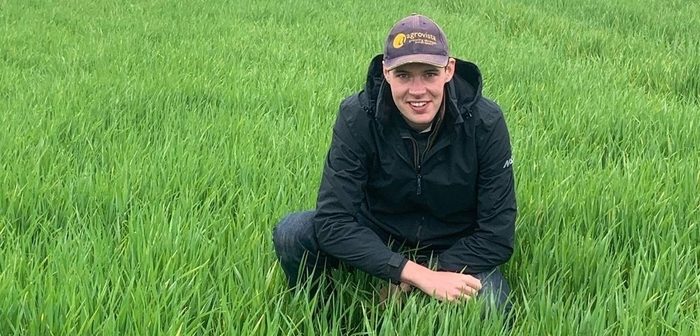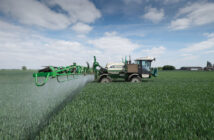Yorkshire-based trainee technical manager and agronomist, Chris Dickinson, provides support to customers and colleagues country-wide taking a particular interest in arable fungicides. With oilseed rape crops growing ahead this season, he wants to make sure that the threat of phoma isn’t forgotten.
“Despite current wet weather, touch wood, oilseed rape establishment seems to be better this year due to improved early season conditions and reduced flea beetle pressure. Whereas in the last few years efforts have been to just get the crop established, this year it’s important to not forget the other risks, such as disease.
Forecasts are already reporting an increase in phoma leaf spot and stem canker risk, with some early drilled crops showing symptoms. The disease infects the young leaves of newly established OSR, spreading via airborne spores initiated from the previous year’s stubble.
So if the crop has successfully made it through establishment and dodged flea beetle, the last thing a grower needs is the black spots from phoma lesions. The disease then travels down the leaves into the stems without displaying further symptoms, causing stem cankers in the spring. Early epidemics, as forecast this year, typically put 0.5t/ha of yield at risk.
In North Yorkshire, there are early signs of phoma although it’s not yet at threshold for treatment (10-20% of plants infected, depending on varietal resistance and plant size). Of course, the frequent rainfall we’re experiencing coupled with warm temperatures means it’s a high-risk scenario for the disease, as it promotes pathogen development.
But on a positive note, the general uplift in establishment this year should slow down potential disease development due to larger canopies and vigorous growth – much more pleasant viewing compared to recent years!
On the whole, growing a variety that is 8+ on the Recommended List (INV1155) is a good way to manage phoma and reduce risk. Even better, varieties with the RLM7 resistance gene will further bolster a crop’s chances, such as Codex (conventional) or DK Exstar (hybrid).
Fungicide-wise, if a crop is showing early phoma infection and is of high risk, an early October application of a PGR plus a low dose of a phoma-active triazole such as difenoconazole (Difcor) or prothioconazole is advised for forward crops. Care should be taken when using a PGR and selecting rates for any late sown or backwards crops, or those suffering continued pest pressure from the likes of pigeons, slugs and flea beetle. This is to avoid further stress which would certainly be unwanted in these scenarios.
Then, depending on continued risk levels, this can be followed by a co-formulation within 4-6 weeks such as prothioconazole + tebuconazole. This will also helpfully mitigate risk of light leaf spot.
Timing is crucial with fungicide applications – always refer to disease forecasts whilst monitoring the crop and checking thresholds.
But most useful to us would be a prolonged cold snap, which would do wonders in reducing phoma risk during this high-pressure period we find ourselves in. We’ve got this far with OSR, let’s hope we can continue and change the crop’s fortunes.”




